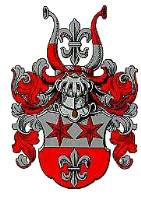(c.1650 Bergen - 1703 Copenhagen)
 Lilienskiold was the district governor of Finnmark (or the County of Vardøhus, as it once was known) from 1684-1701. He lived at Vadsø where, during the second-half of the 1690s, he wrote four large volumes on Finnmark and the northern regions. The most comprehensive volume was titled Speculum boreale, which translates to the "northern mirror". Lilienskiold offers his readers an extensive portrayal of the Danish-Norwegian realm's outermost outpost: from Finnmark and the border areas facing Russia and Sweden. Old northern-Scandinavian trading routes are depicted in texts and by illustrations. The meeting of cultures between those living in the border areas is a repetitive theme of the author. These manuscripts also contain informative chapters on climate, geography, flora and animal life.
Lilienskiold was the district governor of Finnmark (or the County of Vardøhus, as it once was known) from 1684-1701. He lived at Vadsø where, during the second-half of the 1690s, he wrote four large volumes on Finnmark and the northern regions. The most comprehensive volume was titled Speculum boreale, which translates to the "northern mirror". Lilienskiold offers his readers an extensive portrayal of the Danish-Norwegian realm's outermost outpost: from Finnmark and the border areas facing Russia and Sweden. Old northern-Scandinavian trading routes are depicted in texts and by illustrations. The meeting of cultures between those living in the border areas is a repetitive theme of the author. These manuscripts also contain informative chapters on climate, geography, flora and animal life.
Lilienskiold's manuscripts are works-of-art that are characterized by their neat German hand, the use of color ink, and illustrated by drawings and waterpaintings. More than 6000 handwritten pages exist, altogether, and Lilienskiold's research on the northern areas alone amounts to 2500 pages. The author had access to an archive of considerable size which now, unfortunately, has been lost.
In his own time, and that of following generations, Lilienskiold became renowned for his criticism of the Bergen merchantmen and the exploitation which he meant was an essential part of their activities as suppliers of local fishermen and merchants. Along with other northern colleagues of the civil service, Lilienskiold supported the common fishermen when they raised complaints about poor prices on fish, the high costs of essential goods from Bergen merchants, unreasonable conditions of indebtedness, and the use of illegal weights of measurement in commerce. But, in contrast to other civil servants, Lilienskiold's criticism was much more serious. His criticism stung deeper and had a greater effect than, for instance, the contemporary poetry of the Norwegian Petter Dass - Lilienskiold's kindred spirit. This made him vulnerable, not only in relation to the powerful merchants but also in respect to the absolute central administration in Copenhagen.
A collection of Lilienskiold's drawings and waterpaintings




